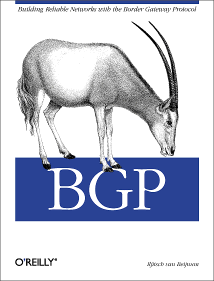
|

|

|
|
Home ·
BGP Expert Test ·
What is BGP? ·
BGP Vendors ·
Links ·
Archives ·
Books ·
My New BGP Book | ||
 (advertisement)
(advertisement)
| ||
|
What is wrong with this picture (DOS and worms) (posted 2003-08-14)
What's wrong with this picture? Under normal circumstances, not much. But when several machines are infected with an aggressive worm or participating in a denial of service attack when an attacker has compromised them, the switch will receive more traffic from the hosts that are connected to the 100 Mbps ports than it can transmit to the router, which also has a 100 Mbps port. The result is that a good part of alll traffic is dropped by the switch. This doesn't matter much to the abusive hosts, but the high packet loss makes it very hard or even impossible for the other hosts to communicate over the net. We've seen this happen with the MS SQL worm in january of this year, and very likely the same will happen on august 16th when machines infected with the "Blaster" worm (who comes up with these silly names anyway?) start a distributed denial of service attack on the Windows Update website. Hopefully the impact will be mitigated by the advance warning. So what can we do? Obviously, within our own networks we should make sure hosts and servers aren't vulnerable, not running and/or exposing vulnerable services and quickly fixing any and all infections. However, for service or hosting providers it isn't as simple, as there will invariably be customers that don't follow best practices. Since it very close to impossible to have a network without any places where traffic is funneled/aggregated, it's essential to have routers or switches that can handle the full load of all the hosts on the internal network sending at full speed and then filter this traffic or apply quality of service measures such as rate limiting or priority queuing. This is what multilayer switches and layer 3 switches such as the Cisco 6500 series switches with a router module or Foundry, Extreme and Riverstone router/switches can do very well, but these are obviously significantly more expensive than regular switches. It should still be possible to use "dumb" aggregation switches, but only if the uplink capacity is equal or higher than the combined inputs. So a 48 port 10/100 switch that connects to a filter-capable router/switch with gigabit ethernet, could support 5 ports at 100 Mbps and the remaining 43 ports at 10 Mbps. In practice a switch with 24 or 48 100 Mbps ports and a gigabit uplink or 24 or 48 10 Mbps ports with a fast ethernet uplink will probably work ok, as it is unlikely that more than 40% or even 20% of all hosts are going to be infected at the same time, but the not uncommon practice of aggregating 24 100 Mbps ports into a 100 Mbps uplink is way too dangerous these days. Stay tuned for more worm news soon.
|

